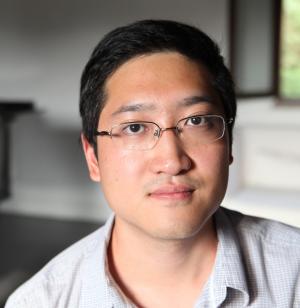by Mike Telin

What listeners think of when hearing such musical gestures served as inspiration for Anthony Cheung’s new work, Topos, which will receive its world premiere by The Cleveland Orchestra under the direction of Franz Welser-Möst this week at Severance Hall. Check our concert listings page for dates and times.
In the program notes, Cheung, the Orchestra’s ninth Daniel R. Lewis Young Composer Fellow, writes:
Each movement is based on one or several related musical topics: representational tropes with special recurring characteristics that evoke scenery, psychological affect, natural and cultural phenomena, etc. The fluidity of meaning in these topics fascinates me. For example, horn calls were originally indicative of hunting, signaling, and fanfare but reemerged in the 19th century as symbols of nostalgia and even leave-taking.
“Topic Theory has been a big thing in musicology for the past three or four decades,” Cheung said during a telephone conversation. He was first introduced to the subject through Raymond Monelle’s book The Musical Topic, which deals with the meaning of symbols in hunting, military, and pastoral music. “Reading it began to change the way I listened to music,” he said. “It was also a big influence on my horn concerto Fog Mobiles back in 2010, which connected to the fog horn sounds I grew up hearing in San Francisco.”
Cheung, who serves as Assistant Professor of Music at the University of Chicago, said that after reading further works on the subject by Leonard Ratner and Kofi Agawu, how he listened to music continued to change. “Every horn call, thunderstorm, and flowing stream became filled with semiotic meaning.”
Cheung began Topos with what would eventually become the fourth movement, “Wild Hunt,” noting that the horn is the orchestral instrument with the most semiotic meaning. “It started out as an instrument that was used for ceremonial and practical reasons, as a hunting and signaling instrument. Those sounds began to suggest something else in the 19th century.” The movement also includes snippets of horn calls from Haydn’s The Seasons, Schumann’s Piano Concerto, and Cheung’s favorite moments from Mahler symphonies juxtaposed with his own take on those quotes.
The opening movement, “Ombra, Night Music,” is the composer’s idea of a topic traditionally associated with ghosts and the supernatural, paired with night music. The second, “Streams, Storm/Stress, Tempesta,” includes his own reimagining of actual storm music, while the third movement, “Speaking Love,” is a rhapsodic fantasy in eleven verses of varying lengths on the topic of love.
Approximately 22 minutes is duration, Topos is scored for triple winds, five horns, timpani plus four percussionists, strings, and two harps. Cheung has also incorporated his interest in microtonality into the work. “There’s an electric keyboard of piano sounds that are detuned by a quarter-tone. Several winds, the second harp, two of the horns, and the second trumpet are also retuned.”
How did he go about training his ear to hear in microtones? “It all began when I started listening to spectral music while I was studying with Tristan Murail at Columbia. At first I needed to reorient my ear, so I relied on the microtonal playback on my computer to hear chords in certain ways. Now I am pretty much able to do it intuitively because I know how the pitch relationships work. But for more complex sonorities, I do need the aid of some playback. Being a pianist and not a string player, it was something that took a lot of adjustment. But once you live in that world, you start to dream in it and see all its colors.”
Cheung said that composing microtonal music for an orchestra is a balancing act between writing music that is idiomatic to the instruments and remaining true to his compositional voice. “By retuning the instruments from the outset rather than finding new and difficult fingerings, I’m able to create sonorities that are easier for the players to deal with.”
Even with retuned instruments, composing in microtonality has its limitations. “Very fast passagework doesn’t tend to happen, so you do need to make adjustments.”
While in Cleveland, Anthony Cheung will also participate in masterclasses, seminars, and coachings at area high schools, as well as the “Meet the Composer” talk in Reinberger Chamber Hall with Rabbi Roger C. Klein.
“I’m really excited and couldn’t be more grateful for the opportunity to compose Topos,” Cheung said. “I’ll also get to meet Dan Lewis, the benefactor of the Young Composers position. It’s a great thing. So many composers that I admire have been Fellows, and the fact that the Orchestra encourages and makes room for the program is wonderful.”
Previous Daniel R. Lewis Young Composer Fellows are Marc-André Dalbavie (1999-2000), Matthias Pintscher (2001-03), Susan Botti (2003-05), Julian Anderson (2005-07), Johannes Staud (2007-09), Jörg Widmann (2009-11), Sean Shepherd (2011-13), and Ryan Wigglesworth (2013-15).
Published on ClevelandClassical.com May 15, 2017.
Click here for a printable copy of this article



